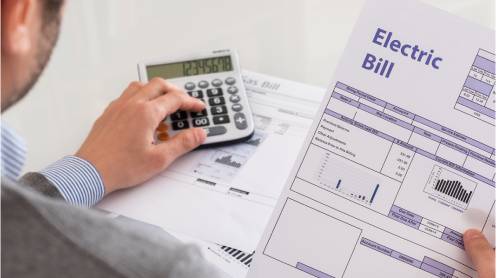This week, OPEC issued its Monthly Oil Market Report. It was released just hours after the IEA released its own monthly oil market forecast. Unlike the IEA, the oil-producing group forecast that growth in oil demand this year would be slower than previously expected. OPEC also forecast an oil market surplus, sparking speculation that it may be preparing for production cuts.
According to OPEC’s latest Monthly Oil Market Report, oil demand this year will record a healthy 3.1 million bpd, although the forecast for the second half of the year was revised down because of “expectations of a resurgence of COVID-19 restrictions and ongoing geopolitical uncertainties.” Those geopolitical uncertainties are a benevolent euphemism for the war in Ukraine.
More interestingly, however, OPEC also calculated the difference between world oil demand for the current quarter and non-OPEC production at 28.27 million bpd, which is what OPEC itself would need to produce to keep the market in balance.
This is not an open declaration of production cuts. It is a simple a-b calculation at the end of a table detailing world oil demand and supply. But it does suggest that a reversal of OPEC’s production policies may be on the way, as ZeroHedge suggested in an article published on Thursday.
Most of OPEC is already—and still—underperforming its production targets. The cartel and its partners led by Russia did promise to boost production by more than 600,000 bpd in July and August, versus some 420,000 bpd agreed to initially. However, they fell short of that target in July and will likely fall short of it again this month.
Then, on top of that, OPEC+ agreed at its latest meeting earlier this month to add a modest 100,000 bpd to total production. Traders were surprised by this addition, and some saw it as a direct slap to Biden after the U.S. president traveled to the Middle East to personally ask Riyadh for more oil.
Speaking of Riyadh, the Crown Prince, who effectively runs the Kingdom, made it clear that he won’t be deploying the country’s spare oil production capacity unless the situation with global oil supply becomes critical.
He used phrases like “severely limited availability” of spare production capacity, although anonymous sources that Reuters talked to said that both Saudi Arabia and the UAE could pump “significantly more” oil should the need for this arise.
The question now is whether OPEC sees this as a need.
This latest downward demand revision was the third that the cartel has made since April. The IEA, meanwhile, appears to have realized that the effect of Western sanctions on Russian oil production and exports has been a lot less severe than feared. And this sets the stage for an oil market that is better supplied than many would have expected just a couple of months ago.
Of course, it would be careless to ignore demand destruction because of high prices as a factor in the overall decline in oil demand. Yet demand destruction, such as it is, is being balanced out by a surge in gas-to-oil switching, notably in Europe, as utilities and governments struggle with record-breaking gas prices.
This week, a tanker of U.S. Mars crude reached Germany in what was the first shipment of such crude ever to that country. The reason: the upcoming Russian oil embargo and the need to urgently find alternatives to Russian crude, especially with the tight gas supply situation getting worse by the day.
Related: The Burgeoning Energy Partnership Between Azerbaijan And The EU
The switch from gas to oil, which might well gather pace as heating season draws nearer, could very well turn into a major source of oil demand in the short term. There are also other reasons for bullishness: Reuters reported earlier this week that U.S. refiners and pipeline operators expected strong demand for their product in the second half of the year, despite high prices.
If demand does turn out to be healthy and strong, then OPEC would not need to take any steps to prop up prices. Brent crude, at the time of writing, was just a dollar shy of $100 per barrel, and West Texas Intermediate was above $93 per barrel.
That kind of Brent price should be fine for OPEC. If it falls, however, things can change very quickly.
The chances of that happening appear distant, at least according to Goldman Sachs’ Damien Courvalin. In a fresh forecast, Courvalin said the bank’s analysts expected oil prices to swing back to $130 per barrel by the end of the year.
“We’re still in deficit. Despite growth slowing, prices still have work to do, and that’s higher from here,” he told Bloomberg.
It is always notable when OPEC sees a market surplus where others see a deficit. It normally means the cartel might be preparing for lower production in anticipation of price levels inconsistent with its expectations.
Of course, OPEC is well aware of the thin line between doing too little and too much for prices and killing demand, which is why it is unlikely the cartel would stand ready to start cutting output anytime soon. For now, it is enough that OPEC has made it clear spare capacity is limited, and most members cannot produce to their quota. There is only so much a cartel can do, after all.





